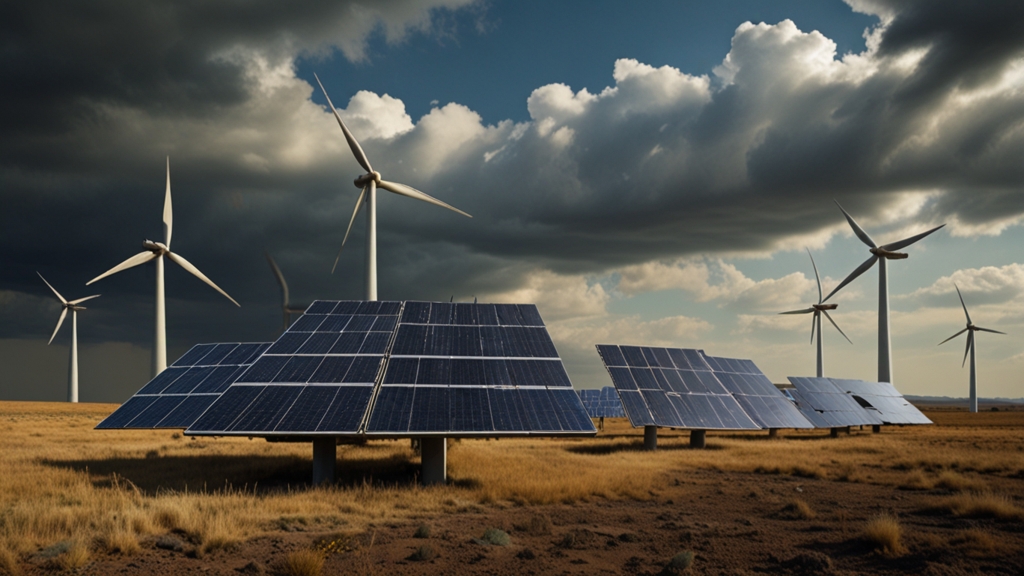Unconventional Renewable Energy Sources: The Next Big Thing
The global quest for sustainable energy has primarily revolved around common sources like solar, wind, and hydroelectric power. However, as technology evolves and our understanding of the environment deepens, attention is increasingly being directed towards unconventional renewable energy sources. These new frontiers in energy production hold the promise of diversifying our energy portfolios while minimizing ecological footprints. Let's explore some of these exciting, yet less mainstream, renewable energy sources.
Ocean Thermal Energy Conversion (OTEC)
Ocean Thermal Energy Conversion utilizes the temperature difference between the warmer surface water of the ocean and the colder deep water. This temperature gradient is harnessed to generate electricity. The concept, dating back over a century, is gaining renewed interest due to advancements in technology and a growing need for clean energy.
"OTEC could provide a continuous source of energy, offering a stable and reliable renewable energy option." — Dr. Larry Carlson, Marine Engineer
Despite its potential, OTEC faces challenges including high initial costs and the technical difficulty of transferring deep seawater to the surface. Nevertheless, pilot projects and experimental plants are showing promising results, making OTEC a viable contender in the renewable energy mix.
Geothermal Energy from Supercritical Fluids
Traditional geothermal energy taps into underground reservoirs of steam and hot water. In contrast, recent interest has turned towards using supercritical fluids—substances at a temperature and pressure above their critical points, where they exhibit unique properties that can significantly enhance energy extraction efficiency.
Supercritical fluids can transfer heat more effectively than their liquid or gaseous counterparts, potentially unlocking vast quantities of energy from geothermal sources previously considered nonviable. Pilot projects in regions with strong geothermal activity, such as Iceland and parts of the United States, are showing encouraging results.
Piezoelectric Energy Harvesting
Piezoelectric materials generate electricity when subjected to mechanical stress. This phenomenon opens up a plethora of opportunities for energy harvesting from everyday activities. From generating electricity through the footsteps of pedestrians to capturing the vibrations of machinery, piezoelectric energy could provide a versatile and ubiquitous source of power.
"Imagine a city where your footsteps on the pavement contribute to its power supply — the possibilities are boundless." — Dr. Anna Hughes, Renewable Energy Specialist
While the energy output from individual piezoelectric devices is relatively small, the cumulative potential when integrated on a large scale is substantial. Companies and researchers are actively exploring applications in urban planning, wearable technology, and industrial systems.
Bioluminescent Algae
Bioluminescent algae, known for their ethereal blue glow, are being investigated for their potential as a bio-energy source. These organisms can be used to produce biofuels, emitting no toxic byproducts and requiring minimal resources compared to traditional agricultural biofuels.
Innovative projects are experimenting with integrating bioluminescent algae into urban spaces, not just for energy production but also for unique lighting solutions. The idea of algae-powered streetlights or building facades brings a futuristic vision of cleaner, greener cities closer to reality.
Conclusion
Unconventional renewable energy sources represent more than just intriguing scientific experiments; they hold the promise of addressing some of the most pressing energy challenges of our time. As research progresses and technology improves, these innovative solutions could play a critical role in a diversified, sustainable energy future.
While each of these unconventional sources faces its own set of challenges, the ongoing advances in science and engineering, combined with growing environmental awareness, make it likely that they will significantly contribute to the energy landscape in the coming years. The next big breakthrough in renewable energy might just come from one of these unconventional sources, changing the way we power our world.






